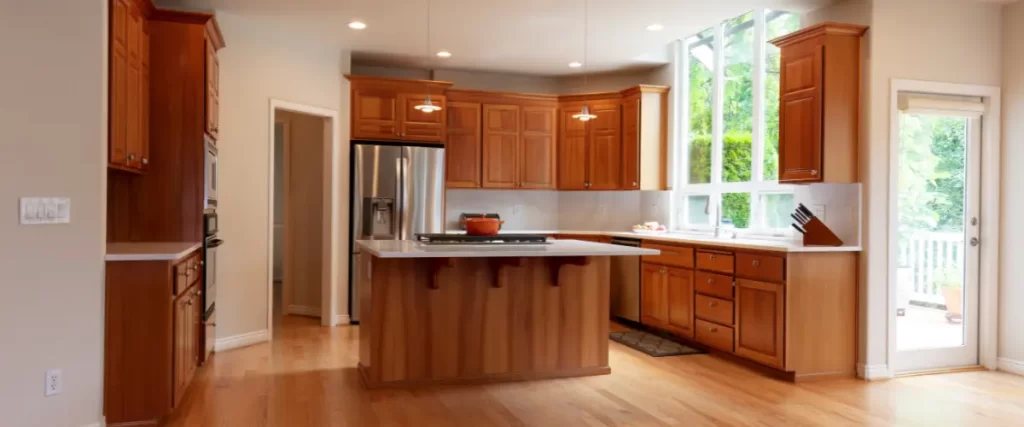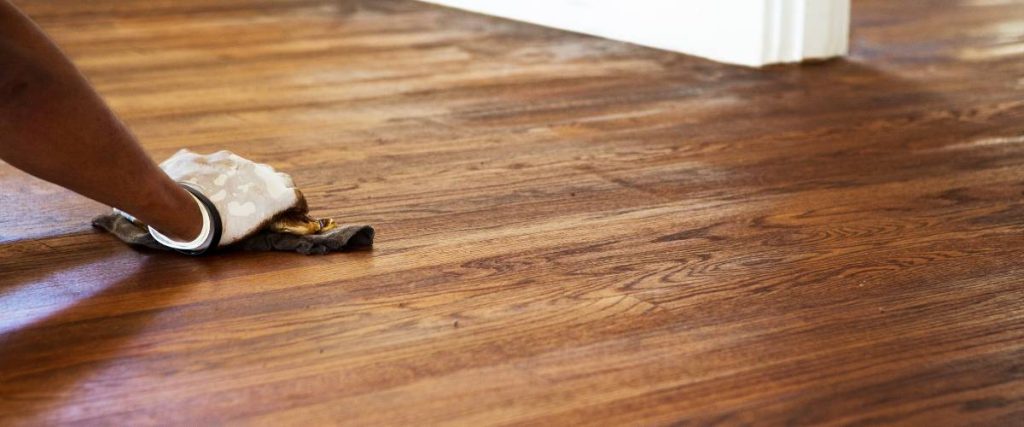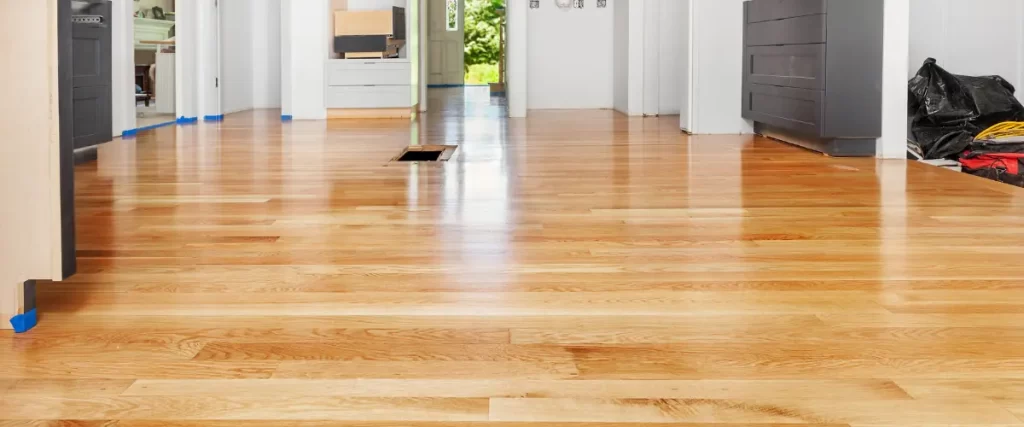If you own a historic home in Roswell or Duluth, you already know the unique charm and character these properties offer. The aged wood floors, creaking underfoot with stories of generations past, are part of the appeal that makes historic homes so special. But what happens when those beautiful hardwood floors begin to show their age?
Do you leave them as-is and risk them getting worse, or do you take the plunge and refinish them? If you’re considering refinishing hardwood floors in your historic home, this guide is for you.
Refinishing your hardwood floors not only restores their beauty but also helps preserve the integrity of your historic home. However, before you dive into this project, there are a few things you should know.
From the type of wood commonly found in historic homes to the best practices for refinishing, we’ve got you covered. Read on to learn everything you need to know before you start refinishing your hardwood floors in Roswell and Duluth.

Why Refinishing Hardwood Floors is Important in Historic Homes
When you think of refinishing hardwood floors, you might picture modern homes with shiny new floors. However, refinishing is equally important—and often necessary—when it comes to historic homes. In Roswell and Duluth, homes built in the 19th and early 20th centuries often feature floors that are made of hardwoods that are harder to find today.
These floors are part of the home’s original charm, and refinishing them is a way to maintain their beauty and protect their historical value.
Additionally, refinishing hardwood floors in historic homes helps protect your investment in the long run. A well-preserved floor can increase your home’s resale value, making it more appealing to buyers who appreciate the vintage details that make your home unique.
What to Expect When Refinishing Hardwood Floors in Historic Homes
Refinishing hardwood floors in historic homes can be a little more complicated than in newer homes. Many historic homes in Roswell and Duluth have unique flooring materials that require special care. The process of refinishing these floors is also more labor-intensive, as it often involves removing layers of old finish and sanding the wood to reveal its natural beauty.
Common Hardwood Types in Historic Homes
In Roswell and Duluth, many historic homes feature oak, heart pine, or maple hardwood floors. These types of wood are not only durable but also rich in character, often with beautiful grain patterns that improve with age. When refinishing floors made from these hardwoods, it’s crucial to choose a finishing process that highlights their natural beauty and complements their age.
The Refinishing Process
Refinishing hardwood floors involves several steps, starting with sanding down the old finish to remove surface damage and scratches. After sanding, the wood is smoothed, and any imperfections are filled. Once the surface is ready, the final step is to apply a protective finish.
The three most common types of finishes for hardwood floors are:
- Oil-based polyurethane – Provides a durable finish but takes longer to dry.
- Water-based polyurethane – Dries faster and has a clearer finish, but may not be as durable as oil-based.
- Wax – A more traditional finish that’s common in historic homes, providing a soft sheen but requiring more maintenance.
Choosing the right finish is critical for preserving the character of your historic floors while ensuring they are well-protected for the future.

Special Considerations for Historic Homes
Refinishing floors in historic homes isn’t just about the aesthetic—it’s also about preserving the integrity of the property. Here are some key considerations to keep in mind before starting your project:
1. Preserving the Authenticity
Historic homes have a certain authenticity that makes them special. Refinishing should enhance, not diminish, that authenticity. If you’re unsure about how to proceed, consider hiring a professional with experience working on historic homes who understands the nuances of restoring aged wood floors while maintaining their original charm.
2. Environmental Factors
In Roswell and Duluth, the climate can play a significant role in the state of your floors. Extreme humidity or temperature fluctuations can cause the wood to expand and contract, leading to gaps or warping. When refinishing your floors, be sure to select materials and finishes that can withstand local climate conditions.
3. Historical Integrity
If you have a particularly valuable or rare hardwood, you may want to consider less invasive techniques to refinish your floors. For instance, some historic homes still retain their original stain or finish, which is worth preserving. In this case, you might opt for a gentle touch-up rather than a full refinishing.
4. Financing the Project
Refinishing hardwood floors in historic homes can be a more expensive endeavor than refinishing floors in newer homes.
The added complexity of restoring older wood and the potential need for repairs could make this a higher-cost project. However, the value it adds to your home can more than make up for the initial investment.
How to Prepare for Refinishing Hardwood Floors in Your Historic Home
Before you start the refinishing process, it’s important to properly prepare your home. Here are some steps to help you get ready for the project:
- Clear the Room – Remove furniture, rugs, and any other items from the room where the refinishing will take place. This makes the process easier and ensures that nothing gets damaged.
- Protect Your Walls and Baseboards – During the sanding process, dust can be everywhere. Protect your walls and baseboards with painter’s tape and plastic sheeting to contain the dust.
- Ventilation – Ensure that the room is well-ventilated, especially if you’re using oil-based finishes that can produce strong odors.
- Choose Your Finish Carefully – Consider whether you want a glossy, satin, or matte finish, as each can give a different look to your floor.
How to Maintain Your Newly Refinished Hardwood Floors
Once your floors have been refinished, it’s essential to maintain them properly to ensure they remain in great condition for years to come. Regular cleaning, careful furniture placement, and periodic reapplication of protective finishes will help extend the life of your hardwood floors.
- Avoid Excessive Moisture – Water can cause wood floors to warp, so make sure to wipe up spills immediately.
- Use Rugs or Mats – Place rugs in high-traffic areas to protect the wood from scratches and wear.
- Regular Cleaning – Sweep or vacuum regularly to keep dirt and debris from scratching the surface of your floors.
The Best Manufacturers of Hardwood Floor Finishes
When choosing finishes for your hardwood floors, it’s important to select high-quality, durable products that will protect your investment. Here are some of the best manufacturers of hardwood floor finishes:
- Minwax – Known for their durable and reliable wood finishes, offering a wide range of stains and protective coatings.
- Bona – Offers high-quality, eco-friendly finishes for hardwood floors that are low on VOCs and safe for families.
- Varathane – Offers a variety of protective finishes with excellent durability and long-lasting results.
- Sherwin-Williams – Known for their premium wood finishes and stains that bring out the beauty of the wood grain.
FAQ
How long does it take to refinish hardwood floors in a historic home?
The process usually takes 3 to 5 days, depending on the size of the space and the condition of the floors.
Can I refinish my hardwood floors myself?
While it’s possible to refinish hardwood floors yourself, it’s often best to hire professionals, especially in historic homes where specialized care is required.
What type of finish is best for historic hardwood floors?
For historic homes, a natural oil or wax finish is often preferred, as it enhances the wood’s natural beauty while offering a classic, low-gloss look.
How do I care for my refinished hardwood floors?
Regular sweeping or vacuuming, placing rugs in high-traffic areas, and avoiding excessive moisture will help maintain your refinished hardwood floors.

Our Team: Experienced Professionals in Hardwood Floor Refinishing
Refinishing your hardwood floors in a historic home is not a DIY job—it requires experience and expertise to ensure the job is done right. Our team has been working with homeowners in Roswell and Duluth for years, specializing in refinishing hardwood floors in historic homes.
We understand the care and attention to detail these projects require, and we are committed to providing the highest quality service.
When you work with our team, you’re choosing professionals who are dedicated to preserving the beauty of your home while ensuring that your floors are durable and long-lasting.
If you’re ready to get started on your hardwood floor refinishing project, contact us at to kickstart your hardwood floor refinishing project! We’ll walk you through the process and get your home looking its best in no time.
